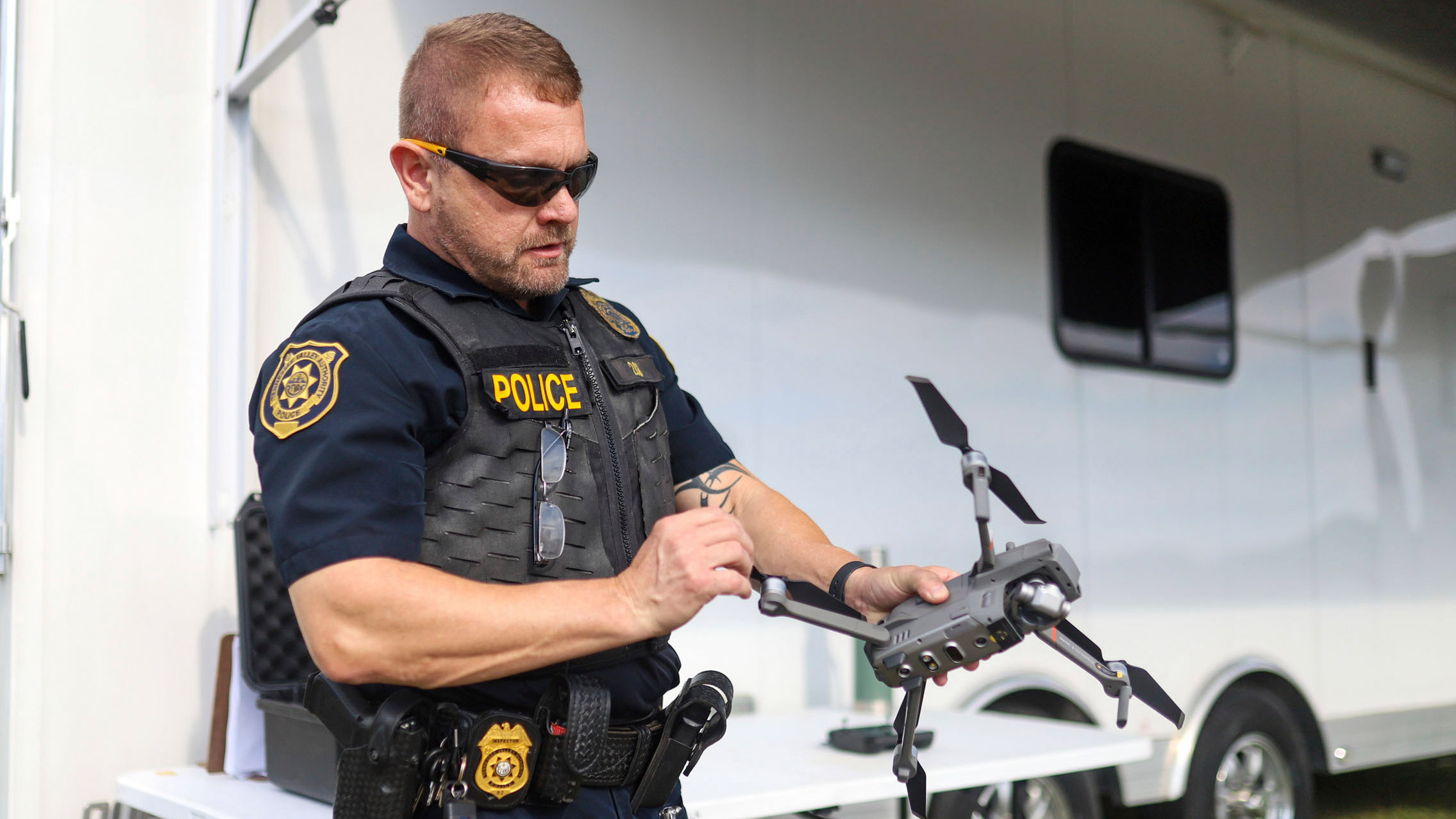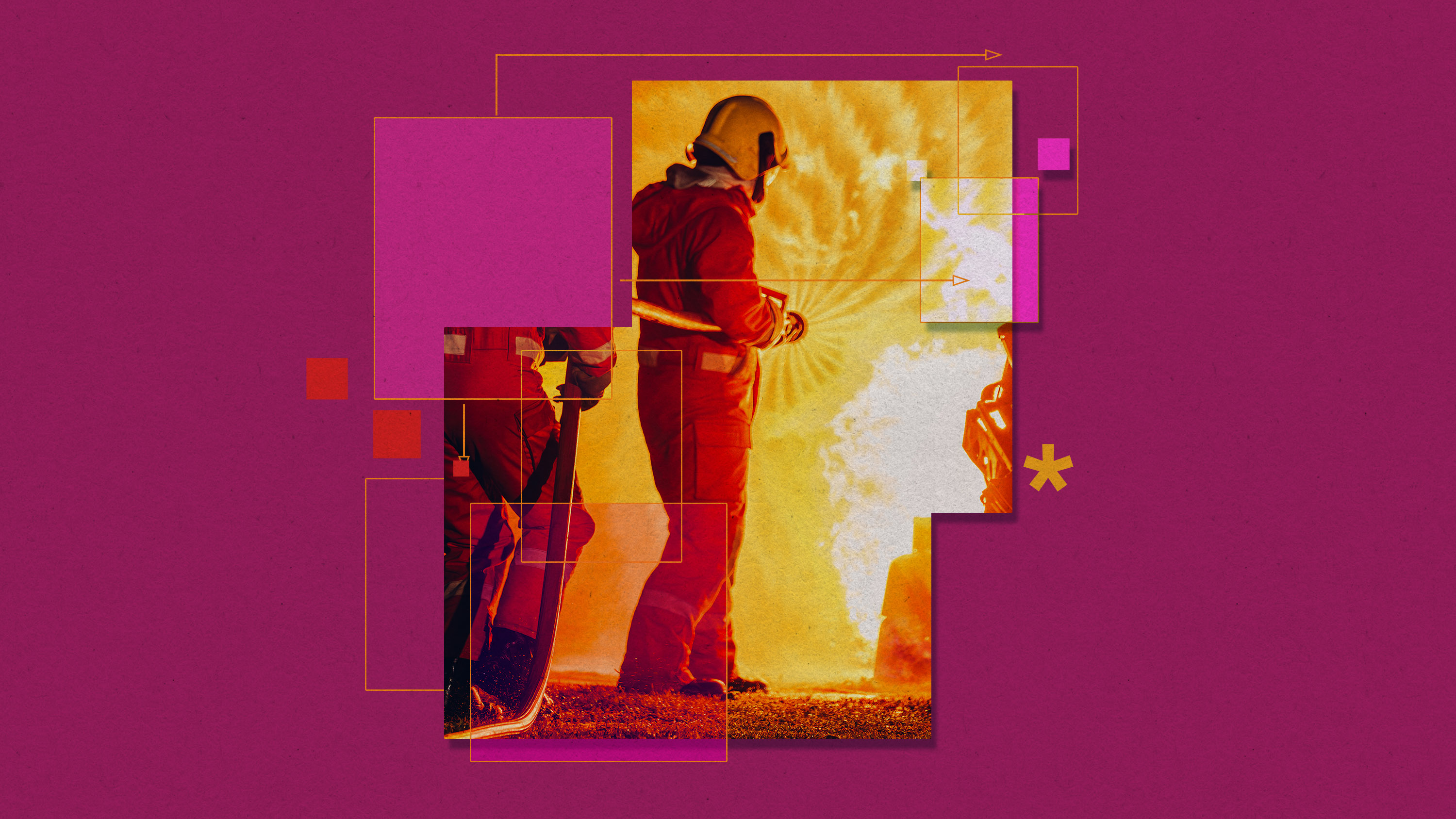What’s next for drones
Police drones, rapid deliveries of blood, tech-friendly regulations, and autonomous weapons are all signs that drone technology is changing quickly.

MIT Technology Review’s What’s Next series looks across industries, trends, and technologies to give you a first look at the future. You can read the rest of them here.
Drones have been a mainstay technology among militaries, hobbyists, and first responders alike for more than a decade, and in that time the range available has skyrocketed. No longer limited to small quadcopters with insufficient battery life, drones are aiding search and rescue efforts, reshaping wars in Ukraine and Gaza, and delivering time-sensitive packages of medical supplies. And billions of dollars are being plowed into building the next generation of fully autonomous systems.
These developments raise a number of questions: Are drones safe enough to be flown in dense neighborhoods and cities? Is it a violation of people’s privacy for police to fly drones overhead at an event or protest? Who decides what level of drone autonomy is acceptable in a war zone?
Those questions are no longer hypothetical. Advancements in drone technology and sensors, falling prices, and easing regulations are making drones cheaper, faster, and more capable than ever. Here’s a look at four of the biggest changes coming to drone technology in the near future.
Police drone fleets
Today more than 1,500 US police departments have drone programs, according to tracking conducted by the Atlas of Surveillance. Trained police pilots use drones for search and rescue operations, monitoring events and crowds, and other purposes. The Scottsdale Police Department in Arizona, for example, successfully used a drone to locate a lost elderly man with dementia, says Rich Slavin, Scottsdale’s assistant chief of police. He says the department has had useful but limited experiences with drones to date, but its pilots have often been hamstrung by the “line of sight” rule from the Federal Aviation Administration (FAA). The rule stipulates that pilots must be able to see their drones at all times, which severely limits the drone’s range.
Soon, that will change. On a rooftop somewhere in the city, Scottsdale police will in the coming months install a new police drone capable of autonomous takeoff, flight, and landing. Slavin says the department is seeking a waiver from the FAA to be able to fly its drone past the line of sight. (Hundreds of police agencies have received a waiver from the FAA since the first was granted in 2019.) The drone, which can fly up to 57 miles per hour, will go on missions as far as three miles from its docking station, and the department says it will be used for things like tracking suspects or providing a visual feed of an officer at a traffic stop who is waiting for backup.
“The FAA has been much more progressive in how we’re moving into this space,” Slavin says. That could mean that around the country, the sight (and sound) of a police drone soaring overhead will become much more common.
The Scottsdale department says the drone, which it is purchasing from Aerodome, will kick off its drone-as-first-responder program and will play a role in the department’s new “real-time crime center.” These sorts of centers are becoming increasingly common in US policing, and allow cities to connect cameras, license plate readers, drones, and other monitoring methods to track situations on the fly. The rise of the centers, and their associated reliance on drones, has drawn criticism from privacy advocates who say they conduct a great deal of surveillance with little transparency about how footage from drones and other sources will be used or shared.
In 2019, the police department in Chula Vista, California, was the first to receive a waiver from the FAA to fly beyond line of sight. The program sparked criticism from members of the community who alleged the department was not transparent about the footage it collected or how it would be used.
Jay Stanley, a senior policy analyst at the American Civil Liberties Union’s Speech, Privacy, and Technology Project, says the waivers exacerbate existing privacy issues related to drones. If the FAA continues to grant them, police departments will be able to cover far more of a city with drones than ever, all while the legal landscape is murky about whether this would constitute an invasion of privacy.
“If there’s an accumulation of different uses of this technology, we’re going to end up in a world where from the moment you step out of your front door, you’re going to feel as though you’re under the constant eye of law enforcement from the sky,” he says. “It may have some real benefits, but it is also in dire need of strong checks and balances.”
Scottsdale police say the drone could be used in a variety of scenarios, such as responding to a burglary in progress or tracking a driver with suspected connection to a kidnapping. But the real benefit, Slavin says, will come from pairing it with other existing technologies, like automatic license plate readers and hundreds of cameras placed around the city. “It can get to places very, very quickly,” he says. “It gives us real-time intelligence and helps us respond faster and smarter.”
While police departments might indeed benefit from drones in those situations, Stanley says the ACLU has found that many deploy them for far more ordinary cases, like reports of a kid throwing a ball against a garage or of “suspicious persons” in an area.
“It raises the question about whether these programs will just end up being another way in which vulnerable communities are over-policed and nickeled and dimed by law enforcement agencies coming down on people for all kinds of minor transgressions,” he says.
Drone deliveries, again
Perhaps no drone technology is more overhyped than home deliveries. For years, tech companies have teased futuristic renderings of a drone dropping off a package on your doorstep just hours after you ordered it. But they’ve never managed to expand them much beyond small-scale pilot projects, at least in the US, again largely due to the FAA’s line of sight rules.
But this year, regulatory changes are coming. Like police departments, Amazon’s Prime Air program was previously limited to flying its drones within the pilot’s line of sight. That’s because drone pilots don’t have radar, air traffic controllers, or any of the other systems commercial flight relies on to monitor airways and keep them safe. To compensate, Amazon spent years developing an onboard system that would allow its drones to detect nearby objects and avoid collisions. The company says it showed the FAA in demonstrations that its drones could fly safely in the same airspace as helicopters, planes, and hot air balloons.
In May, Amazon announced the FAA had granted the company a waiver and permission to expand operations in Texas, more than a decade after the Prime Air project started. And in July, the FAA cleared one more roadblock by allowing two companies—Zipline as well as Google’s Wing Aviation—to fly in the same airspace simultaneously without the need for visual observers.
While all this means your chances of receiving a package via drone have ticked up ever so slightly, the more compelling use case might be medical deliveries. Shakiba Enayati, an assistant professor of supply chains at the University of Missouri–St. Louis, has spent years researching how drones could conduct last-mile deliveries of vaccines, antivenom, organs, and blood in remote places. She says her studies have found drones to be game changers for getting medical supplies to underserved populations, and if the FAA extends these regulatory changes, it could have a real impact.
That’s especially true in the steps leading up to an organ transplant, she says. Before an organ can be transmitted to a recipient, a number of blood tests must be sent back-and-forth to make sure the recipient can accept it, which takes a time if the blood is being transferred by car or even helicopter. “In these cases, the clock is ticking,” Enayati says. If drones were allowed to be used in this step at scale, it would be a significant improvement.
“If the technology is supporting the needs of organ delivery, it’s going to make a big change in such an important arena,” she says.
That development could come sooner than using drones for delivery of the actual organs, which have to be transported under very tightly controlled conditions to preserve them.
Domesticating the drone supply chain
Signed into law last December, the American Security Drone Act bars federal agencies from buying drones from countries thought to pose a threat to US national security, such as Russia and China. That’s significant. China is the undisputed leader when it comes to manufacturing drones and drone parts, with over 90% of law enforcement drones in the US made by Shenzhen-based DJI, and many drones used by both sides of the war in Ukraine are made by Chinese companies.
The American Security Drone Act is part of an effort to curb that reliance on China. (Meanwhile, China is stepping up export restrictions on drones with military uses.) As part of the act, the US Department of Defense’s Defense Innovation Unit has created the Blue UAS Cleared List, a list of drones and parts the agency has investigated and approved for purchase. The list applies to federal agencies as well as programs that receive federal funding, which often means state police departments or other non-federal agencies.
Since the US is set to spend such significant sums on drones—with $1 billion earmarked for the Department of Defense’s Replicator initiative alone—getting on the Blue List is a big deal. It means those federal agencies can make large purchases with little red tape.
Allan Evans, CEO of US-based drone part maker Unusual Machine, says the list has sparked a significant rush of drone companies attempting to conform to the US standards. His company manufactures a first-person view flight controller that he hopes will become the first of its kind to be approved for the Blue List.
The American Security Drone Act is unlikely to affect private purchases in the US of drones used by videographers, drone racers, or hobbyists, which will overwhelmingly still be made by China-based companies like DJI. That means any US-based drone companies, at least in the short term, will only survive by catering to the US defense market.
“Basically any US company that isn’t willing to have ancillary involvement in defense work will lose,” Evans says.
The coming months will show the law’s true impact: Because the US fiscal year ends in September, Evans says he expects to see a host of agencies spending their use-it-or-lose-it funding on US-made drones and drone components in the next month. “That will indicate whether the marketplace is real or not, and how much money is actually being put toward it,” he says.
Autonomous weapons in Ukraine
The drone war in Ukraine has largely been one of attrition. Drones have been used extensively for surveying damage, finding and tracking targets, or dropping weapons since the war began, but on average these quadcopter drones last just three flights before being shot down or rendered unnavigable by GPS jamming. As a result, both Ukraine and Russia prioritized accumulating high volumes of drones with the expectation that they wouldn’t last long in battle.
Now they’re having to rethink that approach, according to Andriy Dovbenko, founder of the UK-Ukraine Tech Exchange, a nonprofit that helps startups involved in Ukraine’s war effort and eventual reconstruction raise capital. While working with drone makers in Ukraine, he says, he has seen the demand for technology shift from big shipments of simple commercial drones to a pressing need for drones that can navigate autonomously in an environment where GPS has been jammed. With 70% of the front lines suffering from jamming, according to Dovbenko, both Russian and Ukrainian drone investment is now focused on autonomous systems.
That’s no small feat. Drone pilots usually rely on video feeds from the drone as well as GPS technology, neither of which is available in a jammed environment. Instead, autonomous drones operate with various types of sensors like LiDAR to navigate, though this can be tricky in fog or other inclement weather. Autonomous drones are a new and rapidly changing technology, still being tested by US-based companies like Shield AI. The evolving war in Ukraine is raising the stakes and the pressure to deploy affordable and reliable autonomous drones.
The transition toward autonomous weapons also raises serious yet largely unanswered questions about how much humans should be taken out of the loop in decision-making. As the war rages on and the need for more capable weaponry rises, Ukraine will likely be the testing ground for if and how the moral line is drawn. But Dovbenko says stopping to find that line during an ongoing war is impossible.
“There is a moral question about how much autonomy you can give to the killing machine,” Dovbenko says. “This question is not being asked right now in Ukraine because it’s more of a matter of survival.”
Deep Dive
Artificial intelligence

Here’s how people are actually using AI
Something peculiar and slightly unexpected has happened: people have started forming relationships with AI systems.

People are using Google study software to make AI podcasts—and they’re weird and amazing
NotebookLM is a surprise hit. Here are some of the ways people are using it.

A new public database lists all the ways AI could go wrong
Its creators hope their work could lead to further research to determine which risks to take more seriously.
Stay connected
Get the latest updates from
MIT Technology Review
Discover special offers, top stories, upcoming events, and more.
